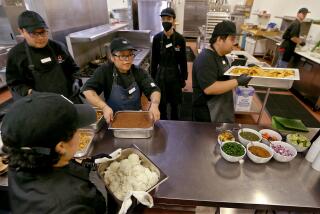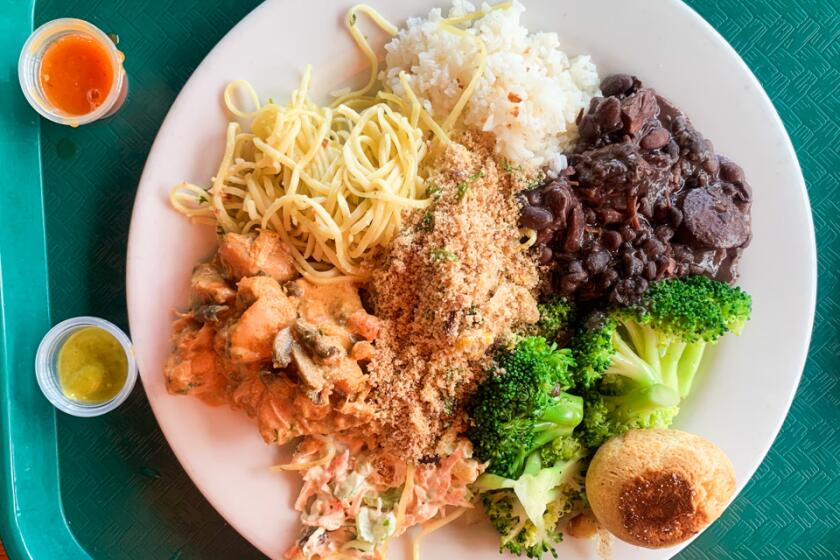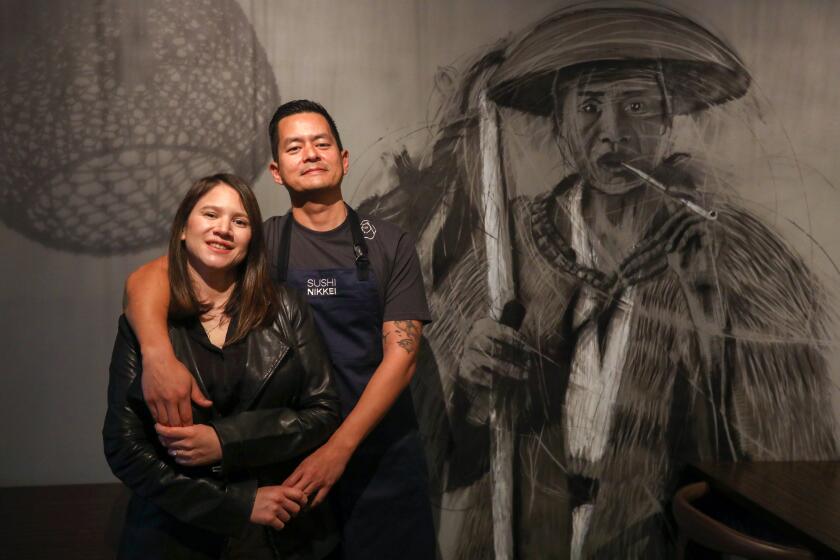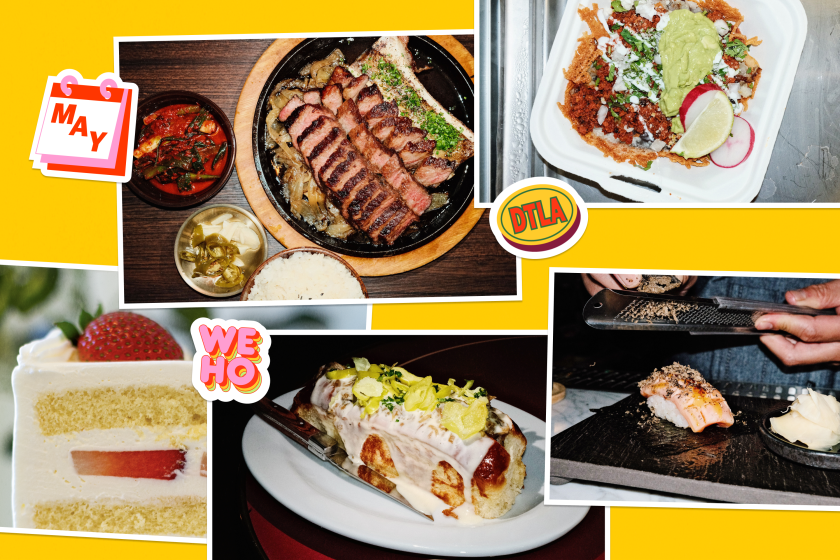Video tip: How to hold a chef’s knife for maximum control

Los Angeles Times Test Kitchen Director Noelle Carter shows how to hold a chef’s knife.
One of the first things culinary students learn when they enter the kitchen is how to properly hold a knife. Where and how you hold your blade determines your level of control.
To maximize control, “choke up” on the knife. This term refers to bringing your hand up the handle of the knife so it straddles the bolster (that thick piece of metal where the end of the handle meets the end of the blade), with your index finger and thumb gripping the blade itself (away from the edge, as shown).
The bolster gives the knife balance and can help keep your hands from slipping over the handle onto the blade. Holding the knife with your hand over the bolster can actually give you more control of the blade than simply gripping the handle itself. If you have a knife with a “bolsterless edge” (the handle meets the blade without a bolster), simply grip the handle and blade the same way, with thumb and index finger reaching over the handle to grip the blade. Be sure your index finger rests at the side of the blade and not on top of the blade (running the length of the blade, as if you were pointing) -- it may feel like you have more control, but you will actually lessen the balance.
Choking up on the knife may feel awkward at first, but you’ll find it gets easier -- and feels more natural -- the more you do it. You may also find your hand is less tired after time in the kitchen.
If you have any kitchen tips or questions you’d like me to explore, leave a comment below or email me at noelle.carter@latimes.com.
- See more at: https://latimesblogs.latimes.com/dailydish/2011/07/la-times-test-kitchen-tips-how-to-hold-a-chefs-knife.html#sthash.42GGzNmJ.dpuf
One of the first things culinary students learn when they enter the kitchen is how to properly hold a knife. Where and how you hold your blade determines your level of control.
To maximize control, “choke up” on the knife. This term refers to bringing your hand up the handle of the knife so it straddles the bolster (that thick piece of metal where the end of the handle meets the end of the blade), with your index finger and thumb gripping the blade itself (away from the edge, as shown).
The bolster gives the knife balance and can help keep your hands from slipping over the handle onto the blade. Holding the knife with your hand over the bolster can actually give you more control of the blade than simply gripping the handle itself. If you have a knife with a “bolsterless edge” (the handle meets the blade without a bolster), simply grip the handle and blade the same way, with thumb and index finger reaching over the handle to grip the blade. Be sure your index finger rests at the side of the blade and not on top of the blade (running the length of the blade, as if you were pointing) -- it may feel like you have more control, but you will actually lessen the balance.
Choking up on the knife may feel awkward at first, but you’ll find it gets easier -- and feels more natural -- the more you do it. You may also find your hand is less tired after time in the kitchen.
If you have any kitchen tips or questions you’d like me to explore, leave a comment below or email me at noelle.carter@latimes.com
If you have any gadgets, kitchen tips or questions you’d like me to explore, leave a comment below or shoot me an email at noelle.carter@latimes.com.
ALSO:
Go behind the scenes at the Test Kitchen
134 recipes for your favorite restaurant dishes
Browse hundreds of recipes from the L.A. Times Test Kitchen
More to Read
Eat your way across L.A.
Get our weekly Tasting Notes newsletter for reviews, news and more.
You may occasionally receive promotional content from the Los Angeles Times.







